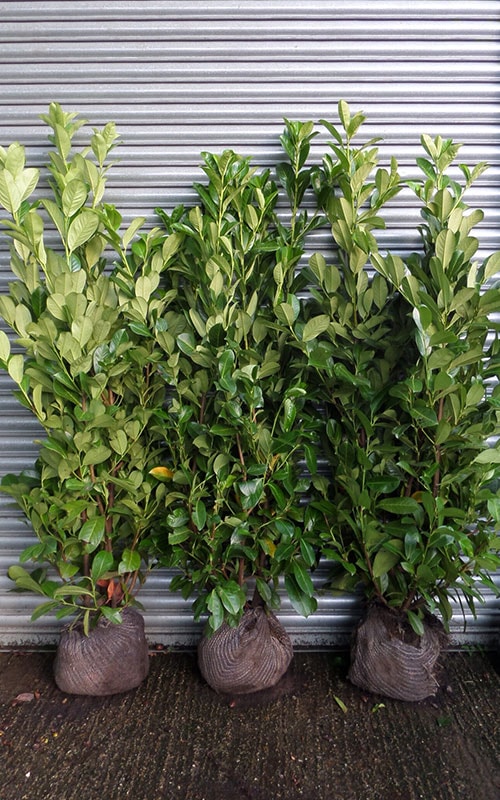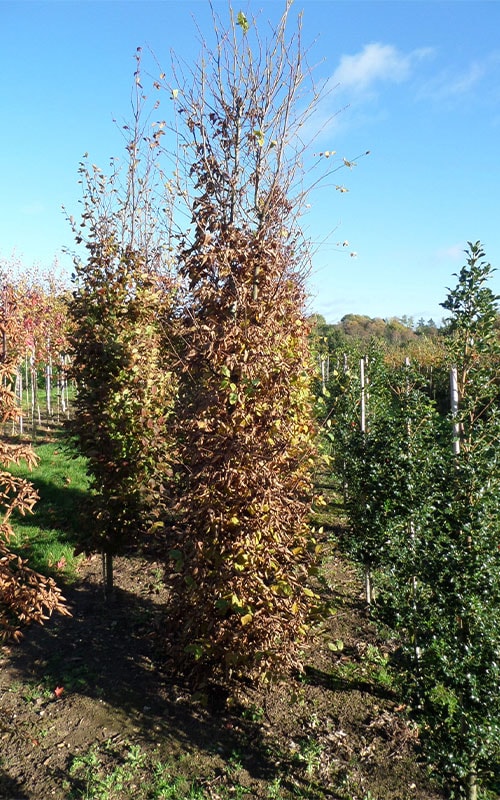
How to Choose the Right Hedge - A Comprehensive Guide
A hedge can change the look and feel of your garden completely. It can add colour and texture, create a natural barrier, and complement other plants in your garden.
But deciding you want a hedge is only part of the decision. With numerous varieties, choosing the right hedge to suit your needs, lifestyle, and garden aesthetic is key. Do you opt for a formal clipped box hedge, something with colourful foliage, or maybe a conifer?
In this article, we’ll cover the key points to consider when choosing the right hedge for your garden.
Why Plant a Hedge?
Before deciding what type of hedge to plant, it’s useful to consider your motivation for planting one. Identifying the hedge’s purpose can help you find the right type. There are several reasons for choosing to grow a hedge:
- A hedge creates a natural alternative to walls or fences
- Hedges filter out noise and pollution
- Your hedge could provide privacy
- A thorny hedge can enhance security
- Hedges attract wildlife and encourage biodiversity
- Once planted, a hedge is an attractive backdrop for other plants
- Your hedge will live for a very long time
- Hedges can be cost-effective compared to some fencing


What to Consider When Choosing Your Hedge
A hedge will evolve over time and will last for many years. They require the proper soil and light conditions and need maintenance; it’s important to make the right choice before planting. Here are some considerations to take into account when choosing your hedge.
Do You Want an All-Year-Round Hedge?
If the appearance of your hedge during the winter months matters to you, plant an evergreen hedge like yew, laurel, box, or leylandii. If you’re happy for your hedge to shed its leaves, a deciduous plant like hornbeam or beech might be for you.
Evergreen hedges often provide a formal look. In addition to a more informal appearance, deciduous hedges are often native, helping maintain the look of a quintessentially British garden.
How Big Would You Like Your Hedge to Be?
You can have a small or tall hedge. Deciding on the final size you’d like it to reach is important, as different species achieve different heights. For example, a yew, laurel, or leylandii would be suitable for maintaining a hedge at six to eight feet or taller, whereas you could maintain a box hedge at around one to two feet, while Sarcococca grows to around three feet.
Before planting a large hedge, it’s always important to chat with adjacent neighbours. Neighbours often benefit from your large hedge; however, they may not be happy about having it overlooking their garden and may begrudge doing any potential maintenance required on their side.
Where Will Your Hedge Grow?
Before planting a hedge, it’s helpful to know how much light it will get and know what type of soil you have. A north-facing garden won’t see much sunlight, so it’s vital to find plants that like the shade. Box, cherry laurel, and Portuguese laurel will all cope in a shady garden.

What Colour Hedge Would You Like?
Hedges don’t have to be green. Photinia Red Robin has beautiful red foliage, and Castlewellan Gold is a bright yellowy gold colour. Hedges can add colour to your garden, so it’s helpful to consider how this adds to the aesthetic you’d like to achieve.
What Type of Soil Will Your Hedge Grow In?
Before planting a hedge, you should check your soil type. If you have heavy clay soil, all is not lost. Euonymus japonicus is a versatile plant which grows in all soil types for small hedges, and if you have heavy clay soil, then Hornbeam will thrive in this as a larger hedge.
If you have chalky soil, lonicera nitida and Osmanthus x burkwoodii are good options, while Hawthorn (crataegus monogyna) and Thuja fare well in wet soil types.

Do You Have a Coastal or Inland Garden?
If you live near the coast, your hedge must tolerate salty air and heavier winds. Griselinia littoralis and Elaeagnus x ebbingei are both suitable for seaside gardens. The choice widens for inland gardens where most plants should thrive.
How Much Time Will You Spend on Maintenance?
All hedges require pruning. The frequency and timing of this task depend on the type. For example, conifers require frequent pruning. Neglect could seriously damage your hedge to the point where it cannot be restored.
Read our blog on how to look after your hedge properly.
Another consideration is that some hedges take longer than others to trim, particularly if you want to achieve a specific look.
It’s important to be realistic about how much time you’ll spend maintaining your hedge. If you’re green-fingered and spend a lot of time gardening, you probably won’t have any issue maintaining even the most time-consuming hedge. If you dislike gardening, pruning may be a task you’d prefer to avoid or delegate to a gardener.
If committing to frequent pruning is too much, a deciduous hedge might be a good option, as they’re typically more forgiving if you don’t trim when you should. Likewise, Laurel has the great benefit of responding well to heavy trimming if it has been left untrimmed for a couple of years.
How Quickly Would You Like Your Hedge to Grow?
You will need to consider whether to plant a smaller hedge and let it mature or buy larger, semi-matured plants. Although a larger plant will provide instant coverage, it may require more attention during the first few years. Ultimately, the size of the plant that you buy will depend on your budget and how long you are willing to wait for it to grow to its final height.
Read our blog on how to grow a hedge quickly.
What’s Your Budget?
Cost is always a consideration, and some hedges are more expensive than others. One of the most cost-effective ways to establish a new hedge is to buy bare-root or root-balled plants. Buying plants like this can save money, which is particularly useful when planting longer hedges, however, they will typically take longer to establish in your garden than a potted plant.
While potted hedges provide an instant year-round solution, bare-root and root-balled plants will need planting during the autumn or winter months so that new root growth can develop ready for the spring.
We’re Here to Help You Find the Best Hedge
With so many factors involved in choosing the right hedge for your garden, it may feel overwhelming. The team at Mathias Nurseries are here to help. In addition to stocking everything you need; we can also advise you on the best hedge for your needs.
Get in touch for more information about our hedges and products, and we can help you make the right choice.
